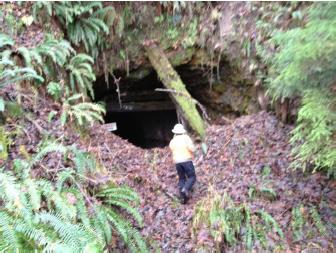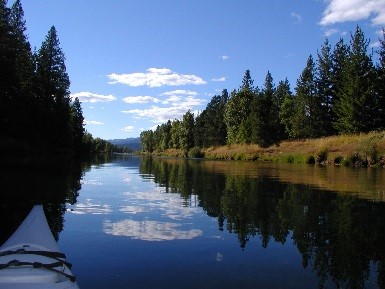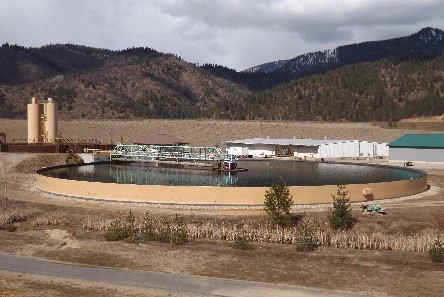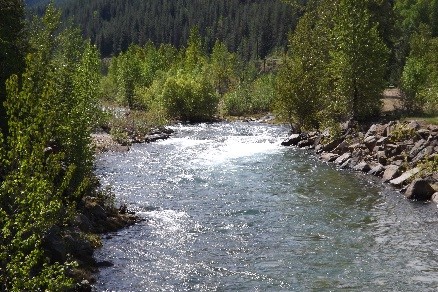Superfund Success Stories: EPA Region 10
On this page:
- Black Butte Mine Superfund Site
- Hanford (USDOE) Site
- Bunker Hill Mining and Metallurgical Superfund Site (Coeur d'Alene Basin Cleanup)
Black Butte Mine Superfund Site
Black Butte Mine Superfund Site
Site Profile Page
About the Black Butte Mine Superfund Site
The Black Butte Mine Superfund Site is located in Lane County, Oregon, approximately 35 miles southeast of Eugene. Mercury mining and processing operations were active at the site from the 1890s to the 1960s. Mercury and other contamination from tailing piles at the abandoned mine site affect creeks that flow into Cottage Grove Reservoir and the Coast Fork Willamette River. The site has been identified as a significant contributor of mercury found in sediment and fish tissue in Cottage Grove Lake. In 2010, EPA listed Black Butte Mine on the National Priorities List. EPA is in the process of investigating the extent and amount of mercury contamination. In addition, in late 2016, as part of an early action, EPA plans to remove contaminated mine tailings from a creek running through the site to reduce the amount of mercury entering area streams.
Why this site is being featured
A Technical Assistance Needs Assessment (TANA) was conducted at Black Butte Mine Superfund site, under Technical Assistance Services for Communities (TASC), in March 2013. The TANA for Black Butte utilized background information on the site, information gathered at the 2012 community meeting, and interviews with the site team. Oregon State University Superfund Research Program began a partnership with EPA through the pilot Partners in Technical Assistance Program (PTAP) to expand upon the community outreach capabilities. This project began in late 2013, with the goal of creating a hands-on, project-based integrated curriculum related to the science of the Black Butte Mine Superfund site, and instructional materials on mercury contamination. The resulting “Mercury, the Community, and Me”curriculum modules for grades K-8 covers general Environmental Health, Mercury and Health, and Mercury in the Environment. The London School is planning to begin the curriculum during the 2016 school year. The content is based on common core standards so other schools can also easily adopt the models into lesson plans.
More Info on the Black Butte Mine Superfund Site
- Learn more about the PTAP project and the Mercury, Community and Me educational package: http://superfund.oregonstate.edu/mercury-community-and-me-0
- This video was created through the PTAP project for students to learn about the history of their community. Many people have no knowledge of the Black Butte Mine or the role it played in local and national history. The history of the Black Butte Mine is fascinating and important for the current environmental health of the surrounding community.
Hanford (USDOE) Site
About the Hanford (USDOE) Site
The 586 square mile Hanford Site is home to one of the largest Superfund cleanups in the nation. Hanford is divided into four National Priorities List (NPL) sites. These areas are part of a U.S. Department of Energy (DOE) complex that includes buildings, disposal sites, the Hanford Reach National Monument, and vacant land. One of the NPL sites, the Hanford 1100 Area (190 square miles), has been deleted from the NPL. A partial deletion was completed for the Hanford 100 Area NPL, removing an additional 140 square miles.
Why this site is being featured
The Hanford Site is adjacent to the Columbia River which is the lifeblood of the Pacific Northwest. DOE’s annual cleanup budget of more than $2 billion a year drives much of the economy of the Tri-Cities area of Washington State. To date, 939 waste sites have been cleaned up, 428 facilities removed and over 17 million tons of waste removed. Over 12 billion gallons of groundwater have been treated removing over 157 tons of contamination.

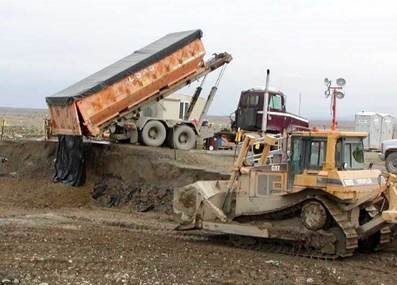
More Info on the Hanford (USDOE) Site
Bunker Hill (Coeur d'Alene Basin Cleanup)
About the Bunker Hill (Coeur d'Alene Basin Cleanup)
The Site includes mining-contaminated areas in the Coeur d’Alene River corridor, adjacent floodplains, downstream water bodies, tributaries, and fill areas, as well as the 21-square-mile Bunker Hill “Box” where historical ore-processing and smelting operations occurred. Lead contamination from historical mining practices poses a risk to people in the area, especially children. We're working with many partner organizations to help reduce this risk.
Why this site is being featured
The EPA and its partners have made significant progress in cleaning up the area to make it a healthier place for people to live, work, play, and raise their families. However, heavy metals from historical mining and smelting still present risks to the environment and people, especially children. The Superfund cleanup program is helping to reduce this risk. The cleanup will take a long time, perhaps decades. The EPA plans to work as efficiently as possible, and leave the area a cleaner, safer place.




